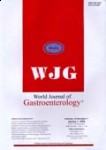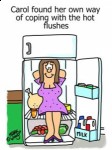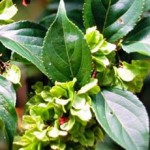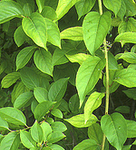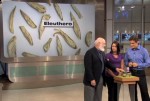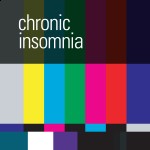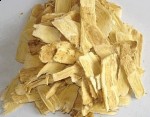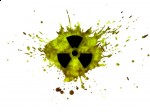 Do you know how much radiation affects us everyday? Do you ever get x-rays, CAT scans or dental x-rays? Do you use a laptop, microwave or sleep in a building that has wi-fi? Do you have power lines near your residence, do you breath air?
Do you know how much radiation affects us everyday? Do you ever get x-rays, CAT scans or dental x-rays? Do you use a laptop, microwave or sleep in a building that has wi-fi? Do you have power lines near your residence, do you breath air?
Do you… do you?? Radiation is pretty hard to avoid these days. As you’ve probably heard small amounts won’t really hurt.. it’s the accumulation of radiation that can be damaging to our cells.
So what’s a person to do and still stay sane (and healthy) in the 21st century when living in a cave is not an option?
Here’s two of my favorite experts, with advice on how to reduce the effects of radiation.
1. Lu Chih-hong, president of the Sheng Te Tang Chinese Medical Hospital in Taichung City, central Taiwan, suggests more GREEN TEA!! Tea, is a common medicinal drink in Asia, it contains a variety of substances including Camaellia sinensis, Vitamin C, Vitamin E, and lipo-polysaccharide, that can help people combat the effects of radiation. According to Lu, Camaellia sinensis is the main substance that helps human bodies discharge radiation contamination. C. sinensis can absorb as much as 90 percent of the radioisotopes in the human body and discharges it before it reaches the bone marrow. He added that C. sinensis also helps human bodies take up Vitamin C more effectively, creating more blood and making capillary blood vessels more resilient. This reduces the possibility of getting Jod-Basedow syndrome, a hyperthyroid disease one can acquire after taking potassium iodide to combat radiation poisoning. Master Sheng Lun, who has dedicated many of his years to organic farming, said drinking tea is even more helpful than taking potassium iodine tablets, because tea prevents radioactive materials from being absorbed into the body and accelerates the body’s metabolism of such substances. Go for the organic green tea, to avoid and pesticide residues.
2. Dr. Tieraona Low Dog is an MD at the Center for Integrative Medicine at the Univ. of Arizona who works with Dr. Andrew Weil. She recommends foods and herbs to help protect us. She said that there is reason to believe that taking two to four grams of curcumin, the active compound in turmeric, can help protect a number of body tissues. In addition, reishi and cordyceps mushrooms can protect bone marrow from toxic assaults, and antioxidants can help the body defend itself from radiation damage.
Other notable foods to include in your diet are:
- Garlic (one Indian tribe living in the desert of Nevada used to eat bulbs of raw garlic to help protect against radiation from the above-ground nuclear tests)
- Foods rich in beta-carotene ie carrots, Kale, green leafy vegetables.
- Ginger
- Curcumin – the active ingredient in turmeric which, in turn, is in yellow curry (available in Indian and Thai dishes).
- Many types of seaweed
- Miso (The longer the fermentation the better)
- Vitamin D3
- Vitamin E
- Panax Ginseng, a traditional adaptogen in Chinese medicine (we carry it)
- American Ginseng (studies have found American Ginseng helped prevent damage from cesium-137)
- Rhodiola, a Chinese herb and adaptogen
- Holy Basil
- Chlorella, a blue-green algae
- Spirulina, a blue-green algae available at health food stores
- Ginko Bilboa
- Tomato extract (Lycopersicon)
- Sesamol (an extract from sesame seeds, just eat sesame seeds)
- Beta-glucan (a yeast derivative)
Because we live in a world with radiation around us 24/7 adding these foods and supplements to your diet at any time will help your cells cope with the onslaught of radiation that we live with everyday.

